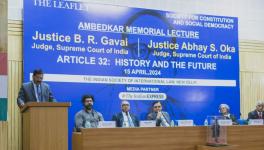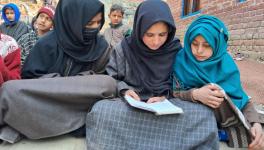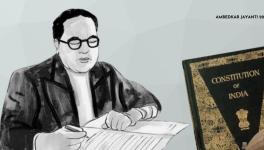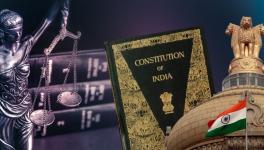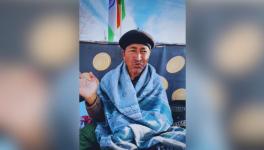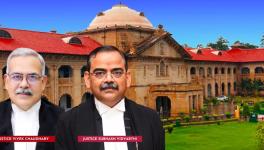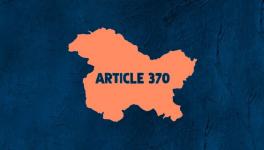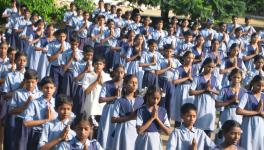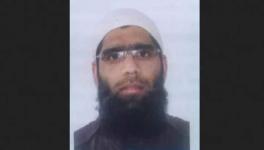Art 370: In Kargil, Stirrings of Dissent, Unease
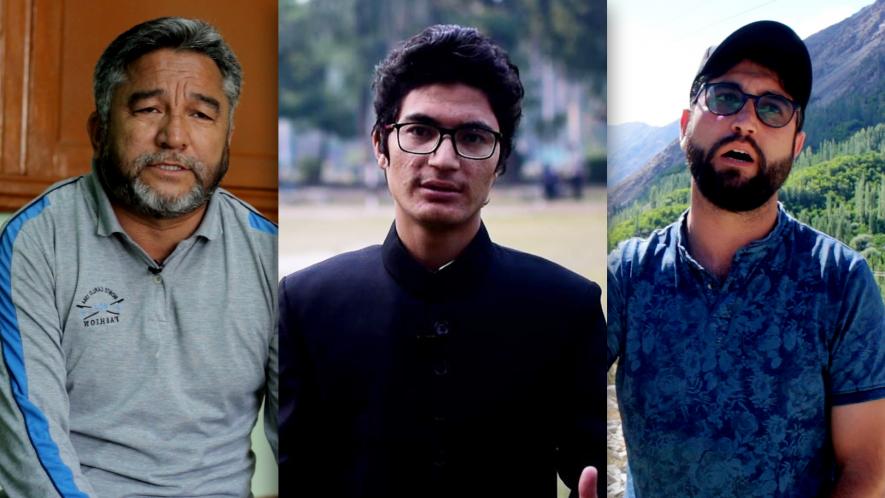
(Left to Right) Asgar Karbalai, Syed Ainul Huda and Akhtar Hussain.
In the national discourse, Kargil, a remote district in the Ladakh region of Jammu and Kashmir, has been projected as jubilant at the bifurcation of their state and hiving it into Union Territories. But what this narrative ignores is the growing schism between the Shias in Kargil and Dras and the Buddhist-dominated rest of Ladakh.
The 2011 Census reports 77% of Kargil as Muslim. Most of them follow Shia Islam. The Census records the proportion of Buddhists and Hindus at just over 14% and 8% respectively in Kargil. In Ladakh excluding Kargil, it is the Buddhists who are in a majority, though they are just about 40% of the region’s total population.
In the months after the Centre revoked the special status of the erstwhile state of Jammu and Kashmir, a number of Kargil’s Shia Muslims are aligning with their brethren in Kashmir, which is overwhelmingly Muslim in demography. Undoubtedly, the Buddhists are largely backing the Centre’s 5 August decision formally split the state in two. Some Leh residents had celebrated the revocation, despite their apprehensions about the future, Kargil and Dras residents had stepped out on the streets to protest.
But on 31 October, the day the state’s split formally came into effect, making Kargil a part of the Ladakh Union Territory, there was a shutdown in Kashmir and unease in Ladakh.
The roots of the conflicted sentiment among the people in Kargil district do not lie in the decisions of 5 August or 31 October. Kargil residents have always complained that the government, both in the former state and the Centre, pays more attention to Leh than to them. For example, when the government created the Ladakh Autonomous Hill Development Council, it was first set up in Leh in 1995. It was only after protests from people that it was also created in in Kargil, eight years later in 2003.
Partly due to this feeling of neglect, but also due to other reasons, over the years, Kargil’s people had developed an ambivalent relationship with Buddhist-dominated Leh. “Kargil and Leh are on the opposite side of each other. Everything between the two places is an issue. The sad reality is that Kargil residents have always been given a second class priority, though Ladakh as a whole remains a Muslims majority region,” said Dr. Sheikh Showkat Hussain.
After the revocation of their special status, the feeling of being “forced” to be a part of Leh was further emphasised. The sentiment here is similar to how Kashmiris feel: that Article 370 and 35A gave the people of Kargil a voice in decisions related to their region and they feel that the government has taken this away from them.
“Kargil has always felt discriminated against Leh’s Buddhists and Muslims,” says Siddiq Wahid, a political scientist and historian who is a senior visiting fellow at the Centre for Policy Research in Delhi. “While there is no homogenous response, feelings of confusion, suspicion and hesitation dominate. While it will take time before things become clear, the overall sentiment here is to go with Kashmir,” he says.
It was in 1979 that the J&K government, led by the popular leader Sheikh Muhammad Abdullah, had divided Ladakh region into two districts, Buddhist-dominated Leh and Muslim-majority Kargil.
“The division is the genesis of every evil between the two communities. This step was taken in order to divide the people along religious lines and also to swing the Muslim vote (especially in Kargil) to favour the politicians in Kashmir,” says Zainab Akhter, a research analyst at the South Asia Center of the Institute for Defense Studies and Analysis (IDSA).
Akhter lives in the Zanskar region of Kargil, where, unnoticed by the mainstream, there is a growing crisis due to the political vacuum. Ordinary citizens are confused by of this flux. “They are leaderless and feel confused. Even Peoples Democratic Party leaders have joined the Bharatiya Janata Party,” he says.
If you ask the Centre, it will say that the creation of two UTs is a grand step towards “full integration” of the Valley and Ladakh with India. But if you ask Kargil and Valley residents, the responses are likely to be very different. “Kargil will never accept the bifurcation, nor will the Valley, the rest of J&K or the secular people of India,” says Asgar Ali Karbalai, a former Member of Legislative Assembly (MLA) from Ladakh. The position of Kargil, he says, should be restored to “as it was in 1947”. That year, more than 5,500 Kargil families were divided between Pakistan and India. “Now we do not want another trifurcation or bifurcation in the name of religion, region or language,” Karbalai says.
“We are a voiceless people now and want our rights restored at all costs,” he says.
The ‘divide’
She said that it was the beginning of people on religious lines, which were deliberately created by the government in Jammu and Kashmir. “This division turned violent in 1989 between Buddhists and Muslims over a minor scuffle between Buddhist and Muslim youths in Leh town,” she said. After this incident, a call was made for social and economic reform through a boycott by the Ladakh Buddhist Association (LBA) and there was an intense revival of the demand for UT status.
Scores of Buddhists converted to Islam and the practice of conversion in Ladakh region is not new. “Since the new political dispensation the conversion issue became a political tool in our region. Ladakh Buddhist Association, a radical Buddhist group, is the brainchild of these mass conversions. The group is sort of doing ‘social policing’ in our region,” says Zainab Akhter.
Inter-religion relations have been patchy between Buddhists and Muslims for years, particularly on the issue of inter-religious marriages. “But, it usually recovers fast and they have been living amicable most of the time,” said Professor Ashok Swain of Department of Peace and Conflict Research, Uppsala University, Sweden.
The initial happiness seen among Ladakhi Buddhists over abrogation of Article 370, Swain expects, will gradually turn more towards apprehension because of the way the status was revoked—suddenly and without taking the residents into confidence. “Ladakhis are also upset because they do not have a legislative assembly any longer,” he points out.
There is also a realisation among the Ladakhis, including the Buddhists and other social groups, that they are being used to play the “Kashmir game”. “They worry that their identity and culture will be increasingly threatened by Hindutva forces and this may even shrink the initial differences we see between Ladakhis and Kargilis,” Swain says.
New ‘Palestine’ in the making
“New Delhi seeks a solution to the Kashmir problem like Israel in Palestine,” says Kargil-based civil society activist and Shia activist Akhtar Hussain. In Kargil, as in Kashmir, there are fears of possible demographic changes that will adversely affect their land holdings. “They will attack our culture, our jobs, and when people migrate here in large numbers, we will fall short of resources,” he says.
The Centre has also left many of pro-India people in the turmoil-hit region flummoxed and bitter. “They have played with sentiments of anti-Azadi and anti-Pakistan people and there will be repercussions on the of Jammu and Kashmir,” says Kargil-based civil society activist, Syed Ainul Huda.
It appears as if instead of solving the Kashmir dispute, as it claims, the central government has ironically created another trouble spot in an already anxious region.
Daanish Bin Nabi is a freelance journalist in Kashmir. The views are personal.
Get the latest reports & analysis with people's perspective on Protests, movements & deep analytical videos, discussions of the current affairs in your Telegram app. Subscribe to NewsClick's Telegram channel & get Real-Time updates on stories, as they get published on our website.









